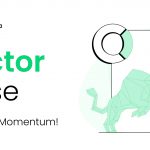In quite a few research reports and recommendations featured in groups, forums and the media, I get to hear and read about certain calls tagged as “High-Risk”. I fail to understand what High-Risk trade means.
Let’s understand something basic about risk. The moment you initiate a trade, you are risking something, irrespective of the position being below or above your entry price. Until the trade gets past the breakeven level, you are risking atleast a portion of your capital.
And once price moves past the breakeven level, you are risking potential profits.
Once you are aware of what is the maxiumum risk you are willing to take in any trade, there is no question of considering trades where the risk is beyond that threshold limit. I fail to understand why should someone take that trade where is the risk is high?
In this context, an interesting question from my mentor comes to mind. He would ask if is it OK to take a trade with 1:3 risk-reward and another with 3:9. In both cases, the risk-reward is 1:3; But something is amiss here and this is definitely not acceptable.
If you know the answer to the question, please drop a mail to b.krishnakumar@fundsindia.com or post in the “comments” section below. If not, I will try to address it in a subsequent post.
More importantly, traders don’t pay much attention to the risk-reward equation. This metric is the engine that drives trading profits. If the risk-reward is lesser than 1:3, it makes life difficult for a trader in the long run.
I am not referring to the traders who trade just for fun and excitement. This post is meant for serious traders who are interested in a logical approach to trading.
Once you understand the crux of this post, it would be apparent that high-risk trades are just meaningless. If not, please do not hesitate to drop a mail.
As traders, you need a clearly defined plan, with a logical place for entry, stop loss and Target. There should be a valid technical basisi for three levels and if the risk-reward is 1:3 or better, go ahead and pull the trigger.
Hope you found this post informative.
Cheers
B.Krishnakumar







